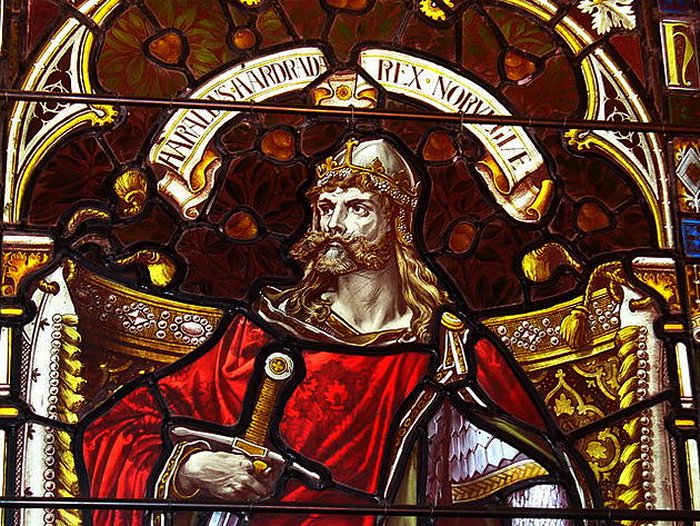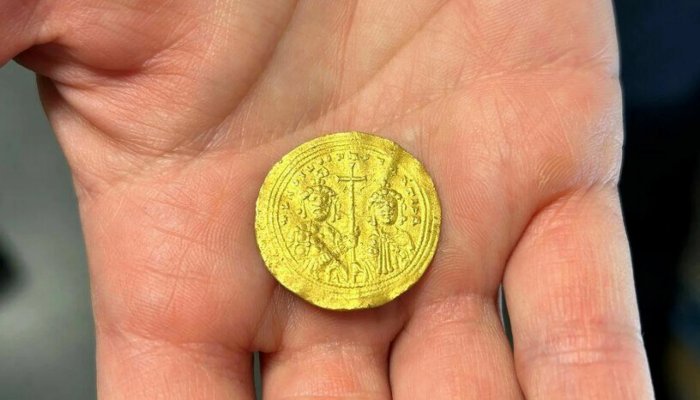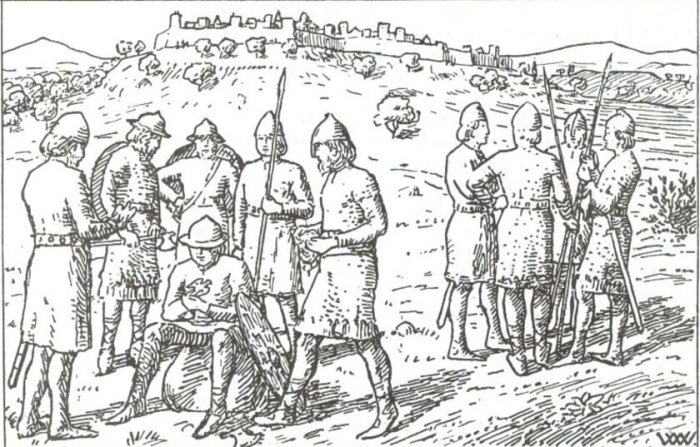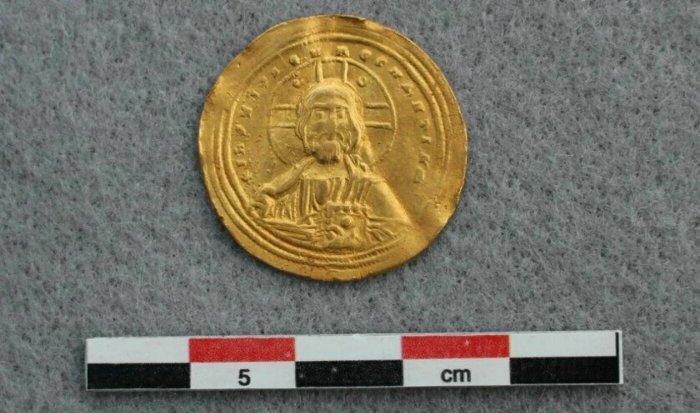Conny Waters – AncientPages.com –A metal detectorist found a rare gold coin in the mountains in Vestre Slidre municipality depicting two emperors and Jesus Christ.
Archaeologists are now trying to determine how this 1,000-year-old Byzantine gold coin ended up in the Norwegian mountains. Could it have been part of the great treasure that Harald Hardrada brought home from Constantinople?

Window with a portrait of Harald Hardrada, Lerwick Town Hall, Shetland. Image credit: Colin Smith – CC BY-SA 2.0
The coin was introduced in Byzantium around 960 A.D. and is unique in the Norwegian context.
According to May-Tove Smiseth, the county archaeologist for Innlandet County in Eastern Norway, the coin is the only one of its kind in Norway.
On one side of the coin, we “can see Christ holding the Bible, and on the other side, it is probably the emperors Basil II (left) and Constantine VIII (right) we see depicted. The two were brothers and ruled together,” Innlandet County Municipality wrote in a press release.
Presumably, the coin was minted early in the 11th century. The exact date is difficult to determine, but the dotted border suggests that it was late in Basil’s and Constantine’s reign, Smiseth explains.
The coin also bears two inscriptions. In Latin, it says Jesus Christ, King of those who rule, and in Greek, it reads Basil and Constantine, emperors of the Romans.
The treasure of Harald Hardrada
In some way or another, the coin found its way to Valdres in Norway.
Perhaps it was originally part of the treasures Harald Hardrada amᴀssed after serving in the Varangian Guard for the Byzantine emperor in 1034? The Varangian Guard consisted of Scandinavian mercenaries who served as bodyguards and were known as being fearless and strong,” Science in Norway reports.

On one side of the coin, the emperors Basil II and Constantine VIII are probably depicted. Credit: Martine Kaspersen, Innlandet County Municipality
During his stay in Constantinople (modern Istanbul, Turkey), Harald Hardrada was part of the Varangian Guard and served the Emperor. In older Byzantine sources, Hardrada is referred to as Araltes. At that time, it was customary for the guards to be given the right to loot the palace and take all the valuables they could find when the emperor died. During Hardrada’s time in Byzantium, three emperors had died.

From Harald Hardrada’s Saga by Wilhelm Wetlesen (1871-1925), from Snorre Sturluson: Heimskringla, 1899 edition. Public Domain.
The treasures he acquired during his time as part of the Emperor’s guard in Constantinople, he sent to Prince Yaroslav in Kyiv. The treasures Harald collected were partly used as a dowry so that he could marry Ellisiv, one of the daughters of Prince Jaroslav of Kyiv.
Incidentally, Basil II, who is depicted on the coin, was Ellisiv’s great-uncle.
The sagas also tell us that Harald and his men returned home to Norway with immense wealth in 1046, with ships laden with gold and other valuables. Harald Hardrada accepted Magnus the Good as co-king of Norway in 1046, as Basil II and Constantine VIII were depicted as co-regents on the coin.

On the other side of the coin we see Christ holding the Bible. Credit: Martine Kaspersen, Innlandet County Municipality
Smiseth explained “three Byzantine gold coins have been found in Sweden, none in Denmark, while 15 have been found in Norway – most of them from various treasure finds made in the 19th century. This includes the recent find in Valdres.
“It’s reasonable to believe that this coin could be from the treasures that Harald Hardrada brought with him. He received a lot of gold in payment from the three emperors in Byzantium who ruled while he was there,” Smiseth says.
See also: More Archaeology News
“Harald acquired a lot of power by using the gold he returned with to build alliances.”
Scientists will examine the site where the coin was found in 2024. Maybe, archaeologists can unearth something more of value that can shed more light on the history of the Byzantine gold coin.
Written by Conny Waters – AncientPages.com Staff Writer





